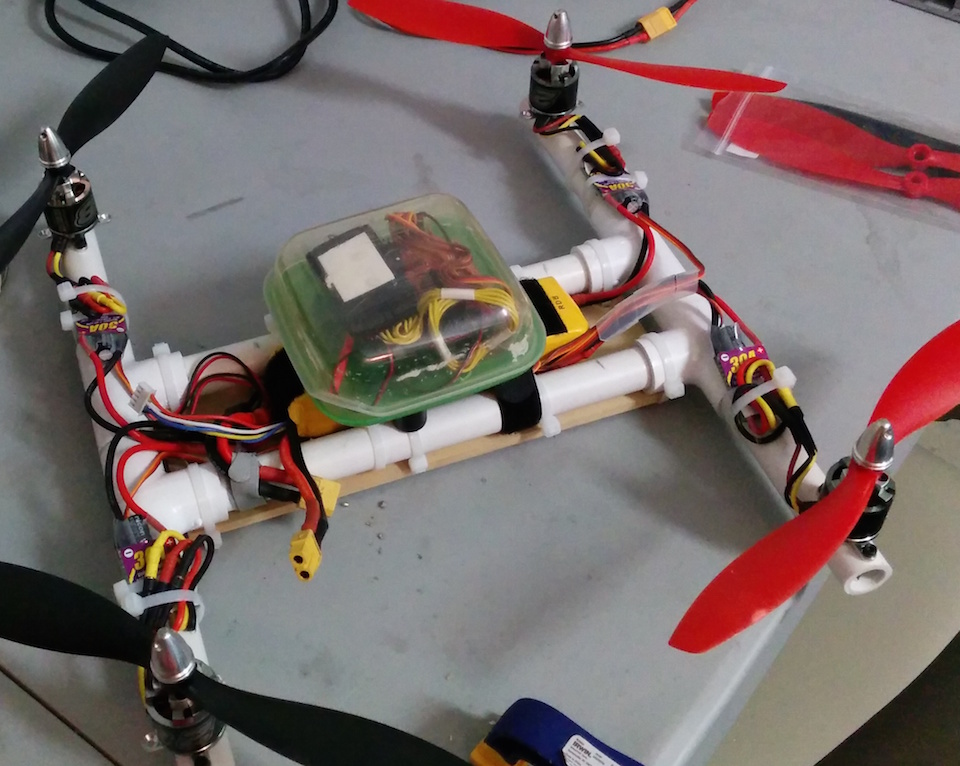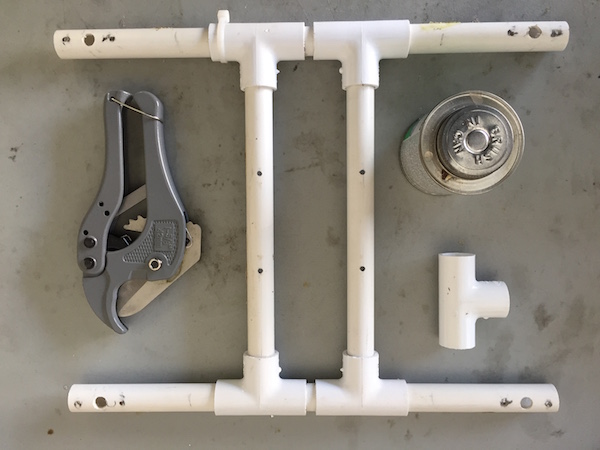PVC pipes used for plumbing are a good choice for building resilient drone frames. I’ve used it in an H4 configuration and it works. In terms of effort, cost and results, I would definitely recommend you to give it a try, specially if you’re starting to build your own models.

Early PVC H4 Drone Frame
The frame above was probably my first variation on the PVC theme. It’s built using Schedule 40 PVC pipe with joints made out of Schedule 40 PVC Tees. Pipes and tees are joined with PVC solvent adhesive, which essentially welds the pieces together rendering them inseparable from then on. A central wood frame protected the battery and other components. Tie wraps were used liberally to assemble and hold parts in place.
When working with PVC adhesive, keep in mind that fumes are dangerous. They are very flammable and will make you dizzy, so work in a well ventilated area.
The image below depicts a later PVC frame based on the same design, converging towards my now favorite H4, no floor setup. To the left, the PVC cutters. To the right, the PVC glue and a single tee.
… don’t expect straight PVC cuts from your ratcheting cutters
Of note, PVC cutters such as these are not precision tools, so don’t expect straight PVC cuts from your ratcheting cutters or you’ll be disappointed.
Oh, and after having assembled a few PVC frames, I got a nice rubber mallet to assist with the assembly. A few taps and the pipes were properly inserted all the way in their tees. This is not strictly a requirement, but makes assembly somewhat easier.

Derived PVC Frame and some tools
PVC Pros and Cons
If you followed the links above, you already realized that you can get your own PVC frame for around $15 and a little elbow grease.
I can add that PVC frames are remarkably sturdy and construction can be pretty simple. I can probably assemble a complete PVC frame in less time than it takes to replace an ESC.
That said, PVC is on the heavy side and this will show in your drone’s performance and length of flight. I experimented with tediously drilling holes through out all the frame to shave off some weight, with less than stellar results.
On the vibration front, PVC is not the greatest either as it does not seem to absorb it well. While flying FPV on the PVC frames, the jello was up to an annoying level.